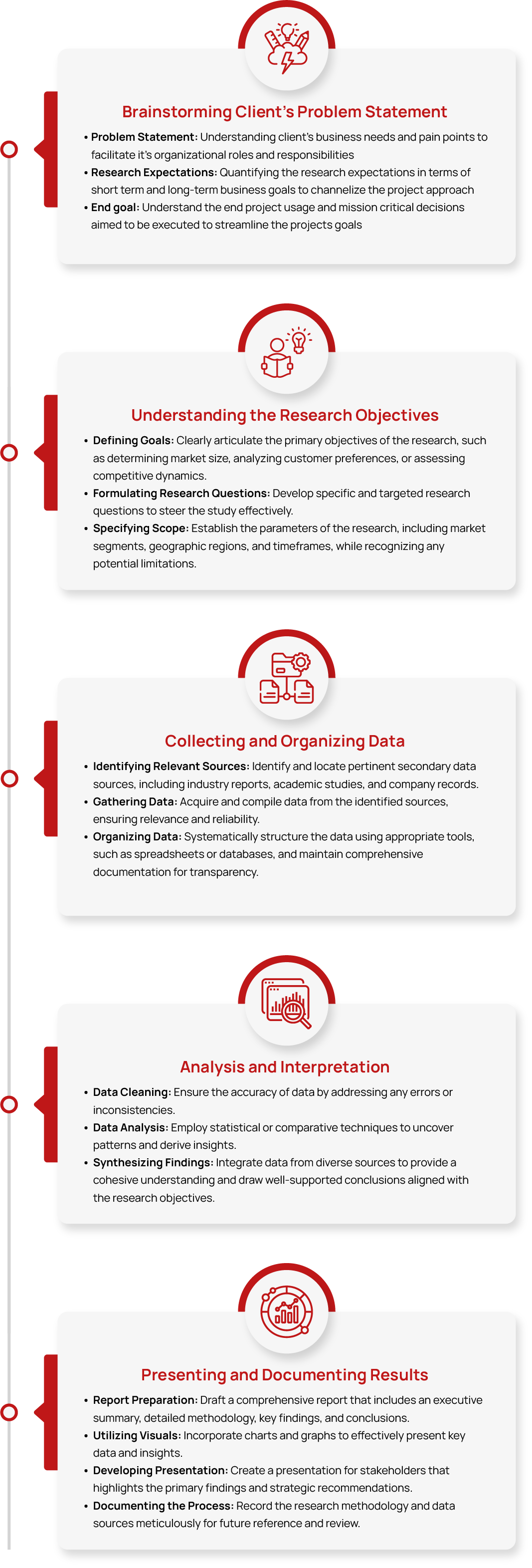Global Health and Wellness Market Size, Share, Growth and Trend Analysis Report, 2032
- Summary
- Market Landscape
- Methodology
- Table of Contents
Global Health and Wellness Market Size, Share & Growth and Trend Analysis Report, By Product Type (Functional Foods and Beverages, Beauty and Personal Care Products, Preventive and Personalized Medicinal Products, and Others), By Functionality (Nutrition & Weight Management, Heart & Gut Health, Immunity, Bone Health, Skin Health, and Others) and By Region (Asia Pacific, Europe, North America, Latin America and Middle East & Africa) and Forecasts 2025 – 2032.
The health and wellness market refers to products and services aimed at promoting physical, mental, and emotional well-being. It includes fitness, nutrition, personal care, and preventive healthcare solutions. Driven by increasing health and wellness consumer trends, the global wellness market focuses on holistic approaches to improve overall quality of life.
The global health and wellness market was valued at approximately USD XX billion in 2024. It is projected to grow to USD XX billion by 2032, with a compound annual growth rate (CAGR) of around 5% from 2025 to 2032, reflecting the growth of the health and wellness industry.
Industry Trends
The health and wellness industry is diversifying with innovations such as personalized nutrition plans, functional foods, and wellness products tailored to consumer needs. There’s a rising demand for plant-based products and clean-label options, along with wearable devices and fitness apps that offer personalized insights for better health management. Trends in health and wellness also show sustainability influencing consumer choices, with eco-friendly packaging and ethically sourced ingredients gaining traction.
Holistic wellness is becoming a priority, with a focus on mental and emotional well-being. Products that support mental clarity, stress relief, and mindfulness are increasingly popular, alongside probiotics and fortified foods. Wellness tourism, including retreats and rejuvenation experiences, is also seeing growth as consumers seek balance in their routines beyond traditional fitness.
However, the wellness industry faces challenges like regulatory barriers, misinformation, and rising healthcare costs. Supply chain disruptions and ingredient sourcing issues may affect product consistency. Yet, opportunities in personalized health solutions, digital wellness platforms, and expanding into new markets are shaping the future of the global wellness industry.
Industry Expert's Opinion:
- Lea Radojicic, Certified Corporate Wellness Specialist
“Wellness is no Longer a Luxury; it is a Necessity for a Thriving Workplace”
- Erik Reis, Director of Health and Wellness
“Future trends of health and wellness will focus on preventing and treating both communicable and chronic diseases before they start. Since treatment for chronic disease eats up nearly 75% of healthcare cost spending in the US alone, there are significant financial incentives for preventing sickness and disease.”
TT Consultants’ Perspective
The health and fitness industry growth is driven by increasing consumer demand for personalized, plant-based, and functional products. As people become more health-conscious, companies are innovating with new offerings that promote immunity, mental well-being, and overall vitality.
Advances in technology and ingredient sourcing are enhancing the quality and efficacy of wellness products, while sustainable practices and packaging innovations align with health and wellness market trends.
With the shift toward holistic health, key players in the health and wellness business are focusing on strategic partnerships, R&D investments, and diversifying their portfolios to cater to a broader audience.
Collaborations between health and wellness industry brands, fitness platforms, and wellness influencers are helping expand market reach and increase consumer engagement. The rise of digital wellness solutions, including apps and personalized nutrition plans, is reshaping the wellness industry market size, positioning health and wellness as a key part of everyday lifestyles.
Market Segmentation
1. By Product Type (Functional Foods and Beverages, Beauty and Personal Care Products, Preventive and Personalized Medicinal Products, and Others)
The health and wellness market is segmented by product type, with functional foods and beverages holding the largest market share of XX% in 2024. This segment's dominance is driven by increasing health and wellness consumer trends, such as demand for probiotics, protein bars, and immune-boosting drinks, catering to health-conscious consumers.
Beauty and personal care products, including skincare solutions with wellness benefits like collagen-infused creams and anti-aging supplements, are experiencing strong growth as consumers seek beauty and wellness market products that promote both aesthetics and overall health.
Preventive and personalized medicinal products are gaining traction in the global wellness industry, with personalized vitamins, supplements, and genetic-based health assessments reflecting the shift toward individualized wellness approaches.
2. By Functionality (Nutrition & Weight Management, Heart & Gut Health, Immunity, Bone Health, Skin Health, and Others)
The health and fitness market is segmented by functionality, with Nutrition & Weight Management holding the largest market share of XX% in 2024. This includes meal replacements, weight-loss supplements, and low-calorie snacks, driven by rising health and wellness industry trends toward healthy eating.
Heart & Gut Health is another key segment, growing due to consumer focus on cardiovascular and digestive well-being through functional foods, probiotics, and supplements. Immunity-boosting products, such as vitamin C, zinc, and herbal supplements, are in high demand, especially during global health concerns, reflecting rising health trends.
3. By Region (Asia Pacific, Europe, North America, Latin America and Middle East & Africa)
The health and wellness market is segmented by region, with North America holding the largest market share of XX% in 2024. This is driven by the region's high consumer awareness of health and wellness, a strong focus on fitness, and the widespread adoption of functional foods, supplements, and wellness technologies. Europe follows closely, with increasing demand for clean-label products, plant-based options, and personalized wellness solutions, reflecting the region’s growing health-conscious consumer base.
Asia Pacific is experiencing the fastest growth with a CAGR of XX%, fueled by a rising middle class, greater health awareness, and increasing interest in traditional wellness practices like Ayurveda and Chinese medicine. Functional foods, beauty products, and supplements are becoming more popular as consumers in this region adopt healthier lifestyles.
Latin America and the Middle East & Africa are also emerging markets, with growing demand for nutrition-focused products, wellness services, and natural health solutions driven by rising health concerns and increased access to wellness products. The diversity in regional preferences presents opportunities for companies to tailor their offerings to local tastes and needs.
Competitive Scenario
The global wellness market is led by major players like Amway Corp., Bayer AG, and Danone, innovating in nutrition, supplements, and personalized wellness solutions to meet health and wellness industry growth. Companies like Herbalife Nutrition Ltd., Vitabiotics Ltd., and Nestlé SA are expanding into functional foods and targeted health products.
In the fitness industry, David Lloyd Leisure Ltd. and Fitness First are enhancing wellness services, while L'Oréal SA integrates wellness into skincare. FMCG leaders like Procter & Gamble, Unilever Plc, and Holland & Barrett are capitalizing on wellness marketing with clean-label and sustainable innovations.
These companies leverage R&D, global expansion, and strategic partnerships to stay competitive in the rapidly evolving health and wellness business, reinforcing the wellness industry worth and future growth potential.
Recent Developments and Strategic Activities:
- In January 2025, Dr Morepen has launched LightLife, a weight management product, to tap into India’s growing wellness market, valued at Rs 12,000 crore. Targeting Rs 200 crore in revenue by 2030, the product is priced at Rs 599 and will initially be available through direct-to-consumer channels. LightLife combines prebiotics, probiotics, and dietary fiber, supported by a wellness program and health app for personalized tracking.
- In October 2024, AV Laboratories, a luxury clinical skin care brand that provides biotech innovations and advanced skin care solutions, announces its official brand launch with the release of two hero products, Face Serum and Face Cream Light.
- In August 2024, Regenerative health company LifeNet Health has announced the launch of its newest bone allograft designed in collaboration with healthcare giant Johnson & Johnson MedTech as the company plans to make its entrance into the demineralized bone matrix (DBM) market.
- In August 2024, Travis Barker launched his wellness product line at Sprouts nationwide. The offerings included Muscle Therapy, Mushroom Adaptogen Gummy Blends, and the Kourtney x Barker Wellness collection. The Mushroom Adaptogen Gummies Daytime Blend was designed to boost energy, focus, and immunity, while the Nighttime Blend supported rest, recovery, and relaxation.

Please fill out the form to request the ToC and gain access to detailed insights in the report.
Request Table of Contents







